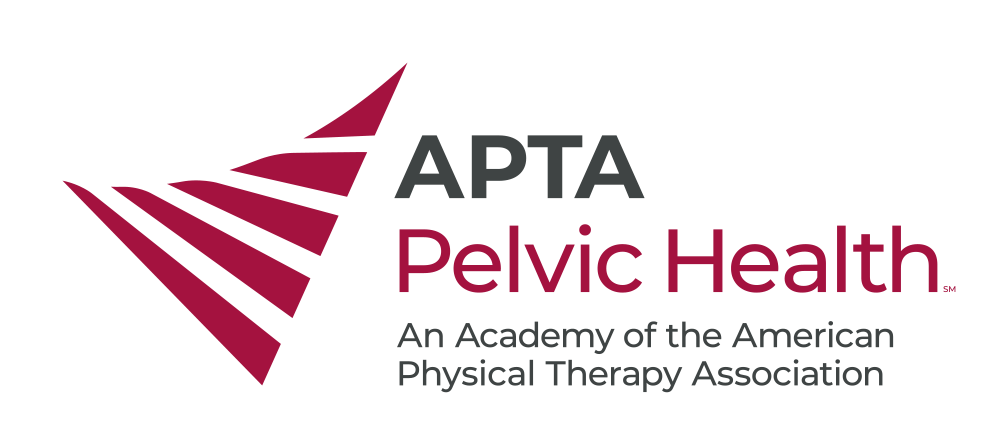The Optimizing Postpartum Outcomes Act (H.R. 4074)
Originally published by the American Physical Therapy Association (APTA) at www.apta.org/advocacy/position-papers.
Position
The American Physical Therapy Association strongly supports the Optimizing Postpartum Outcomes Act (H.R. 4074), legislation that will raise awareness of the availability and importance of pelvic health services, particularly pelvic health physical therapy, for postpartum women using Medicaid and the Children’s Health Insurance Program. H.R. 4074 was introduced by Reps. Don Bacon, R-Neb., and Lori Trahan, D-Mass.
Background
Pelvic health physical therapy is a vital part of recovery in the postpartum period. It can aid in muscle control,
tissue repair, and healing internal portions of cesarean section scars. However, many mothers lack access to and awareness of the benefits of pelvic health physical therapy. Even some health care providers may not
understand the importance of pelvic health physical therapy in the postpartum period. This can lead to delays
in, or even an absence of, proper postpartum care — which can have lifelong negative effects for mothers.
H.R. 4074 is designed to address these knowledge and access gaps by providing guidance to state Medicaid
and CHIP programs administering pelvic health services performed during the postpartum or neonatal period. It also would authorize programs to raise both provider and patient awareness of the importance of pelvic health examinations and pelvic health physical therapy.
Raising Awareness
H.R. 4074 would require the Centers for Medicare & Medicaid Services to, within one year of enactment, issue guidance on coverage under Medicaid and CHIP for pelvic health services performed during the postpartum or neonatal period (six months from the termination of the pregnancy or the end of lactation, whichever is later). This guidance would include best practices; recommendations for available financing options; technical assistance to state agencies regarding flexibilities relating to and incentives for screenings, referrals, and access to covered services; and suggested terminology and diagnosis codes.
The law also would instruct the Government Accountability Office to conduct a study on pelvic health programs and submit a report to Congress. This report would address gaps in coverage for covered pelvic health services and other services postpartum women received during their pregnancies.
Additionally, H.R. 4074 would obligate the Secretary of the Department of Health and Human Services to carry out a program to educate and train health professionals on the benefits of pelvic health physical therapy. The program also would educate postpartum women on the importance of pelvic floor examinations and pelvic health physical therapy and how to obtain these services.
Comprehensive Care
Instructing mothers and providers on the importance of pelvic health physical therapy is vital for preserving maternal health. Pelvic health physical therapists practicing in this field treat individuals across the
gender spectrum and life span for pelvic health-related conditions that include, but are not limited to, urinary,
bowel, musculoskeletal, and sexual dysfunction, cancer-related rehabilitation, and the peripartum state.
After performing an evaluation and making a diagnosis, pelvic health physical therapists create and implement personalized plans based on best-available evidence to help their patients improve mobility, recover from injury, prevent future injury, and manage pain and chronic conditions. They are part of a collaborative care team aimed at empowering patients to be active participants in their care and well-being.
Facts About Physical Therapists and Physical Therapist Assistants
Who We Are
Physical therapists are movement experts who help to optimize people’s physical function, movement,
performance, health, quality of life, and well-being. Physical therapists evaluate, diagnose, and manage
movement conditions for individuals, and they also provide contributions to public health services aimed at improving population health and the human experience. Physical therapist assistants are educated and licensed or certified clinicians who provide care under the direction and supervision of a licensed physical therapist. PTs and PTAs care for people of all ages and abilities.
What We Do
After performing an evaluation and making a diagnosis, physical therapists create and implement personalized plans based on best available evidence to help their patients improve mobility, manage pain and other chronic conditions, recover from injury, and prevent future injury and chronic disease. PTs and PTAs empower people to be active participants in their care and well-being. They practice collaboratively with other health professionals to ensure the best clinical outcomes.
Where We Practice
PTs and PTAs provide services to people in a variety of settings, including outpatient clinics or offices; hospitals; inpatient rehabilitation facilities; skilled nursing, extended care, or subacute facilities; education or research centers; schools; community centers; hospices; industrial, workplace, or other occupational environments; and fitness centers and sports training facilities.
 The Economic Value of Physical Therapy in the US
The Economic Value of Physical Therapy in the US
A September 2023 report from the American Physical Therapy Association outlines the cost-effectiveness and economic value of physical therapist services for a broad range of common conditions. “The Economic Value of Physical Therapy in the United States” reinforces the importance of physical therapists and physical therapist assistants in improving patient outcomes and decreasing downstream costs. Policymakers should use this report to inform legislative and regulatory efforts for health care delivery and payment under Medicare, Medicaid, and commercial payers. Review the findings at ValueofPT.com.
Education and Licensure
As of 2016, all PTs must receive a doctor of physical therapy degree from an accredited physical therapist education program before taking and passing a national licensure exam that permits them to practice. Licensure is required in each state (or other jurisdiction, including the District of Columbia, Puerto Rico, and the U.S. Virgin Islands) in which a PT practices. PTAs must complete a two-year associate’s degree from an accredited physical therapist assistant program and pass a national exam. State licensure or certification is required in each state (or jurisdiction) in which a PTA works.
American Physical Therapy Association
The American Physical Therapy Association is a national organization representing more than 100,000 physical therapists, physical therapist assistants, and students of physical therapy nationwide. Our mission is to build a community that advances the profession of physical therapy to improve the health of society.
Co-sponsor H.R. 4074 today!
For more information and contact info for APTA Government Affairs staff, scan here or visit apta.org/position-paper.
APTA Advocacy Center
Scan the QR to add your name and show Congress that patients, families, and providers are united behind this important legislation.
Take Action
Related Posts




